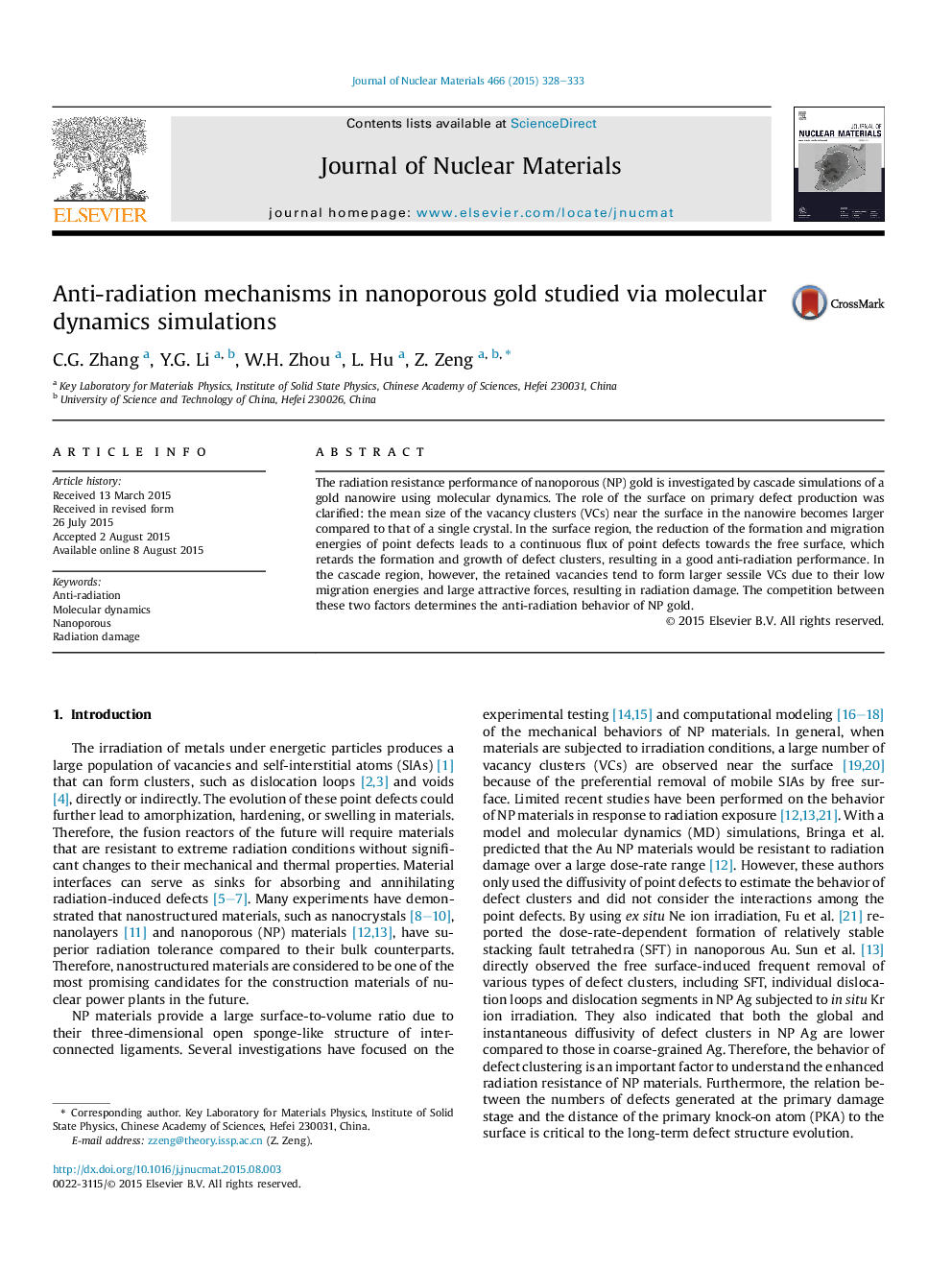| Article ID | Journal | Published Year | Pages | File Type |
|---|---|---|---|---|
| 7964888 | Journal of Nuclear Materials | 2015 | 6 Pages |
Abstract
The radiation resistance performance of nanoporous (NP) gold is investigated by cascade simulations of a gold nanowire using molecular dynamics. The role of the surface on primary defect production was clarified: the mean size of the vacancy clusters (VCs) near the surface in the nanowire becomes larger compared to that of a single crystal. In the surface region, the reduction of the formation and migration energies of point defects leads to a continuous flux of point defects towards the free surface, which retards the formation and growth of defect clusters, resulting in a good anti-radiation performance. In the cascade region, however, the retained vacancies tend to form larger sessile VCs due to their low migration energies and large attractive forces, resulting in radiation damage. The competition between these two factors determines the anti-radiation behavior of NP gold.
Related Topics
Physical Sciences and Engineering
Energy
Nuclear Energy and Engineering
Authors
C.G. Zhang, Y.G. Li, W.H. Zhou, L. Hu, Z. Zeng,
